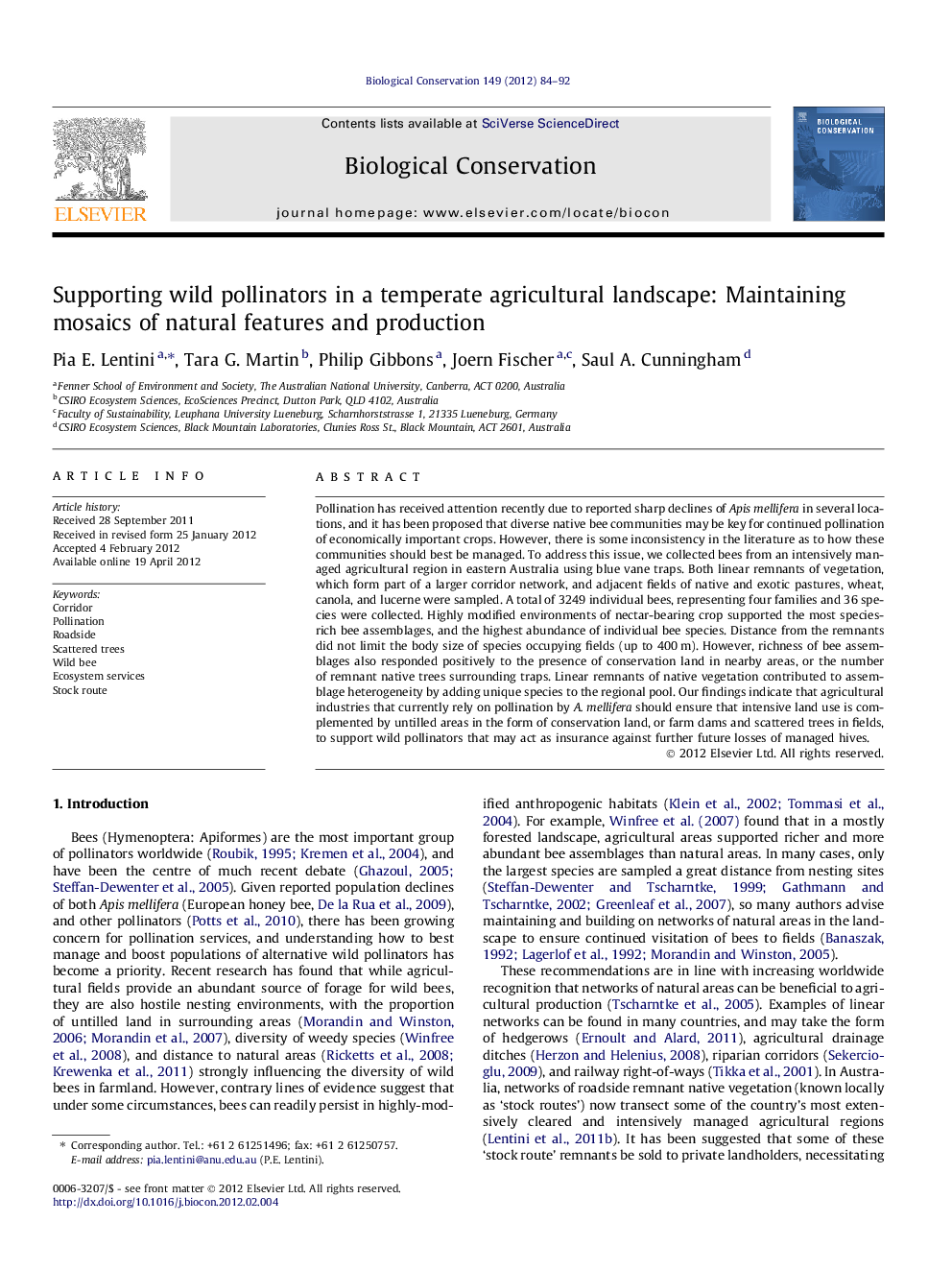| کد مقاله | کد نشریه | سال انتشار | مقاله انگلیسی | نسخه تمام متن |
|---|---|---|---|---|
| 4385327 | 1304532 | 2012 | 9 صفحه PDF | دانلود رایگان |

Pollination has received attention recently due to reported sharp declines of Apis mellifera in several locations, and it has been proposed that diverse native bee communities may be key for continued pollination of economically important crops. However, there is some inconsistency in the literature as to how these communities should best be managed. To address this issue, we collected bees from an intensively managed agricultural region in eastern Australia using blue vane traps. Both linear remnants of vegetation, which form part of a larger corridor network, and adjacent fields of native and exotic pastures, wheat, canola, and lucerne were sampled. A total of 3249 individual bees, representing four families and 36 species were collected. Highly modified environments of nectar-bearing crop supported the most species-rich bee assemblages, and the highest abundance of individual bee species. Distance from the remnants did not limit the body size of species occupying fields (up to 400 m). However, richness of bee assemblages also responded positively to the presence of conservation land in nearby areas, or the number of remnant native trees surrounding traps. Linear remnants of native vegetation contributed to assemblage heterogeneity by adding unique species to the regional pool. Our findings indicate that agricultural industries that currently rely on pollination by A. mellifera should ensure that intensive land use is complemented by untilled areas in the form of conservation land, or farm dams and scattered trees in fields, to support wild pollinators that may act as insurance against further future losses of managed hives.
► We investigated how to best manage agricultural landscapes for bee communities.
► Bees responded positively to intensive land use but also conservation land or trees.
► The smallest bee species were commonly trapped up to 400 m into fields.
► Scattered trees, which compete with crops, may also provide refuge for pollinators.
► There is a need to maintain mosaics where cropping and untilled areas coexist.
Journal: Biological Conservation - Volume 149, Issue 1, May 2012, Pages 84–92